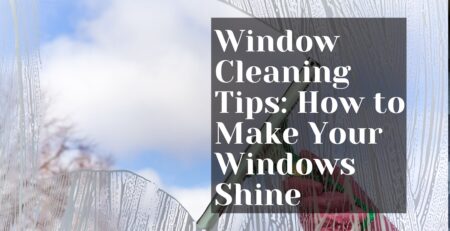Tempered Glass Adjacent to Doors
Tempered Glass Adjacent to Doors
Per Section R308.4.2 the next hazardous location that we find is glass located adjacent to doors. Similar to the section above which is for glass located in a door, this section covers glass located next to doors.
There’s a lot going on here but it is important to understand first off that the glass must have the bottom exposed edge be located less than 60 inches above the floor and must meet either of the 2 scenarios located below.
First, glass that is located parallel to the closed door and within 24 inches of either side of the door must be tempered.
Second, glass that is located perpendicular, or less that 180 degrees, from the plane of a closed door and within 24 inches of the hinge side of an in-swinging door must be tempered.
Exceptions:
This section however has 4 exceptions that will not require the glass to be tempered.
- Decorative glazing.
- Where there is an intervening wall or other permanent barrier between the door and the glazing.
- Where access through the door is to a closet or storage area 3 feet or less in depth. Glazing in this application shall comply with Section R308.4.3.
- Glazing that is adjacent to the fixed panel of patio doors.
Decorative glass, similar to the above section, when adjacent to a door is not required to be tempered.
For the second exception if a permanent barrier, like a wall, is located between the door and glazing, the glazing then is not required to be tempered.
The next exception is for glazing adjacent to doors that serve a closet or storage area that is 3 feet or less in depth. If this is the case, this exception references you to apply Section R308.4.3 to the glazing to determine if it is considered a hazardous location.
Finally glazing that is adjacent to the fixed panel of a patio door is not required to be tempered. Again for the purposes of this section only it is referring to glass that is adjacent to doors.

Per Section R308.4.3 the next hazardous location that we find is with glass located within a window.
In this section the glass in a window must meet all 4 parameters for it to be considered hazardous.
Glazing in an individual fixed or operable panel that meets all of the following conditions shall be considered to be a hazardous location:
- The exposed area of an individual pane is larger than 9 square feet. 2. The bottom edge of the glazing is less than 18 inches above the floor. 3. The top edge of the glazing is more than 36 inches above the floor.
- One or more walking surfaces are within 36 inches, measured horizontally and in a straight line, of the glazing.
3. The top edge of the glazing is more than 36 inches above the floor.
4. One or more walking surfaces are within 36 inches, measured horizontally and in a straight line, of the glazing.
Exceptions:
For glass located within windows, the code does have 3 exceptions. If any of these are met, then the window is not required to be tempered per only this section.
Decorative glazing.
Where glazing is adjacent to a walking surface and a horizontal rail is installed 34 to 38 inches above the walking surface. The rail shall be capable of withstanding a horizontal load of 50 pounds per linear foot without contacting the glass and have a cross-sectional height of not less than 1-1/2 inches.
Outboard panes in insulating glass units and other multiple glazed panels where the bottom edge of the glass is 25 feet or more above grade, a roof, walking surfaces or other horizontal [within 45 degrees of horizontal] surface adjacent to the glass exterior.
Decorative glass, like stained glass for example, it not required to be tempered.
For the second exception if a horizontal rail is provided along the walking surface adjacent to the glass that is located between 34 to 38 inches above the floor, then the glass is not required to be tempered.
For the final exception here the outboard panes in insulating glass units or other multiple glazed panels do not need to be tempered when the bottom edge of the glass is located 25 feet or more above a floor, roof, walking surface, or other horizontal surface that is adjacent to the exterior glass.
Tempered Glass in Wet Locations Section R308.4.5 covers glass located in or near wet locations.
Glazing in walls, enclosures or fences containing or facing hot tubs, spas, whirlpools, saunas, steam rooms, bathtubs, showers and indoor or outdoor swimming pools where the bottom exposed edge of the glazing is less than 60 inches measured vertically above any standing or walking surface shall be considered to be a hazardous location. This shall apply to single glazing and each pane in multiple glazing.
When you think of glass in wet locations, most people think of windows located in shower/tub enclosures however per the section above you can see that a wet location can be found at many other places.
The key here is when glass is located in walls, enclosures or fences facing all of the wet locations listed above, it must be tempered where the bottom edge of the glass is located less than 60 inches vertically from the floor. This applies to both single and multiple glazing.

The code does have an exception for this which reads as follows:
Glazing that is more than 60 inches, measured horizontally and in a straight line, from the water’s edge of a bathtub, hot tub, spa, whirlpool or swimming pool or from the edge of a shower, sauna or steam room.
In the above code section we saw that when the bottom edge of the glass is located less than 60 inches vertically above the floor, it must be tempered. However this exception says that regardless of the vertical height, if the glass is located more than 60 inches horizontally from the edge of the water for the features listed above, then it is not required to be tempered.
Tempered Glass Adjacent to Stairs and Ramps
When it comes to glass located adjacent to stairs or ramps, Section R308.4.6 reads as follows:
Glazing where the bottom exposed edge of the glazing is less than 36 inches above the plane of the adjacent walking surface of stairways, landings between flights of stairs and ramps shall be considered to be a hazardous location.
When glass is adjacent to a stairway, stair landing, or ramp, and where the bottom of the glass is located less than 36 inches above the walking surface of these features, then it is required to be tempered.

There are two exceptions found in this section.
Where glazing is adjacent to a walking surface and a horizontal rail is installed at 34 to 38 inches above the walking surface. The rail shall be capable of withstanding a horizontal load of 50 pounds per linear foot without contacting the glass and have a cross-sectional height of not less than 1-1/2 inches.
Glazing 36 inches or more measured horizontally from the walking surface.
This first exception here is similar to the one found in Section R308.4.3 as discussed earlier.
If a horizontal rail is provided along the walking surface adjacent to the glass that is located between 34 to 38 inches above the floor, then the glass is not required to be tempered.
This rail however must be able to withstand a horizontal load of 50 pounds per linear feet and have a cross sectional height of no less than 1-1/2 inches. It does not mention how far the rail must be located from the glass but should not make contact with the glass when pressure is applied to it.
As for the second exception when the glass, regardless of the vertical height, is located 36 inches or more horizontally from the walking surface, it is not required to be tempered.
Tempered Glass Adjacent to the Bottom of Stair Landings
This is the final hazardous location on this list. Section R308.4.7 covers glass located adjacent to the bottom of stair landings. The prior section we looked at had to do with glass adjacent to stairs however this section singles out the bottom of the stair landing as a separate section.
Glazing adjacent to the landing at the bottom of a stairway where the glazing is less than 36 inches above the landing and within a 60-inch horizontal arc less than 180 degrees from the bottom tread nosing shall be considered to be a hazardous location.
In this section glass that is less than 36 inches above the landing and within a 60 inch dimension at any point along the nosing of the bottom tread measured horizontally must be tempered.

There is one exception to this that reads as follows.
Where the glazing is protected by a guard complying with Section R312 and the plane of the glass is more than 18 inches from the guard.
Where at the bottom of the stair landing the glass is protected by a Guardrail and is located more than 18 inches from the guardrail, it is not required to be tempered.
The Guardrail here is not like the horizontal rail exception mentioned in the other sections as previously discussed but instead this guardrail must comply with Section R312 in order for this exception to be applied.
This sums up the basic code requirements of when to determine if glazing is located in a hazardous location within residential dwelling units that are subject to the International Residential Code (IRC).
* Reference Source – 2018 International Residential Code














